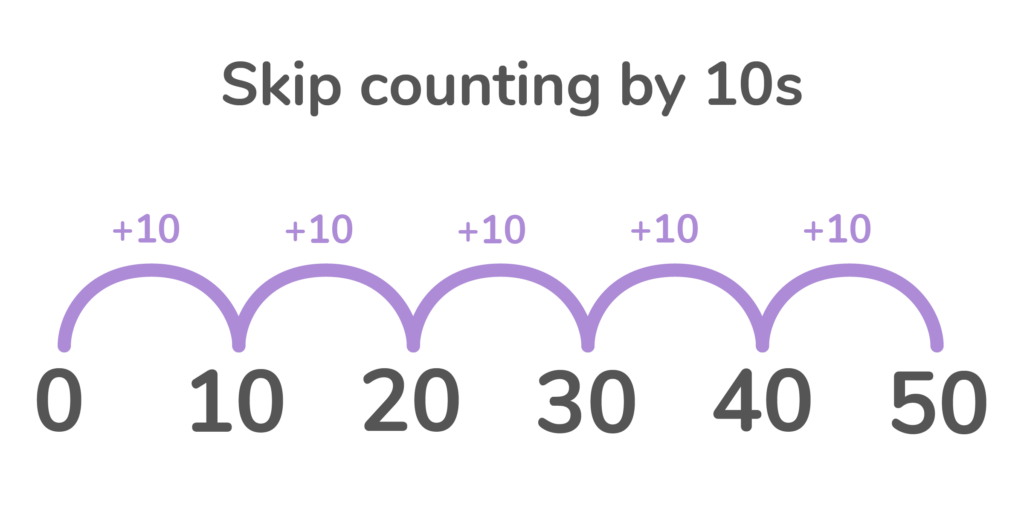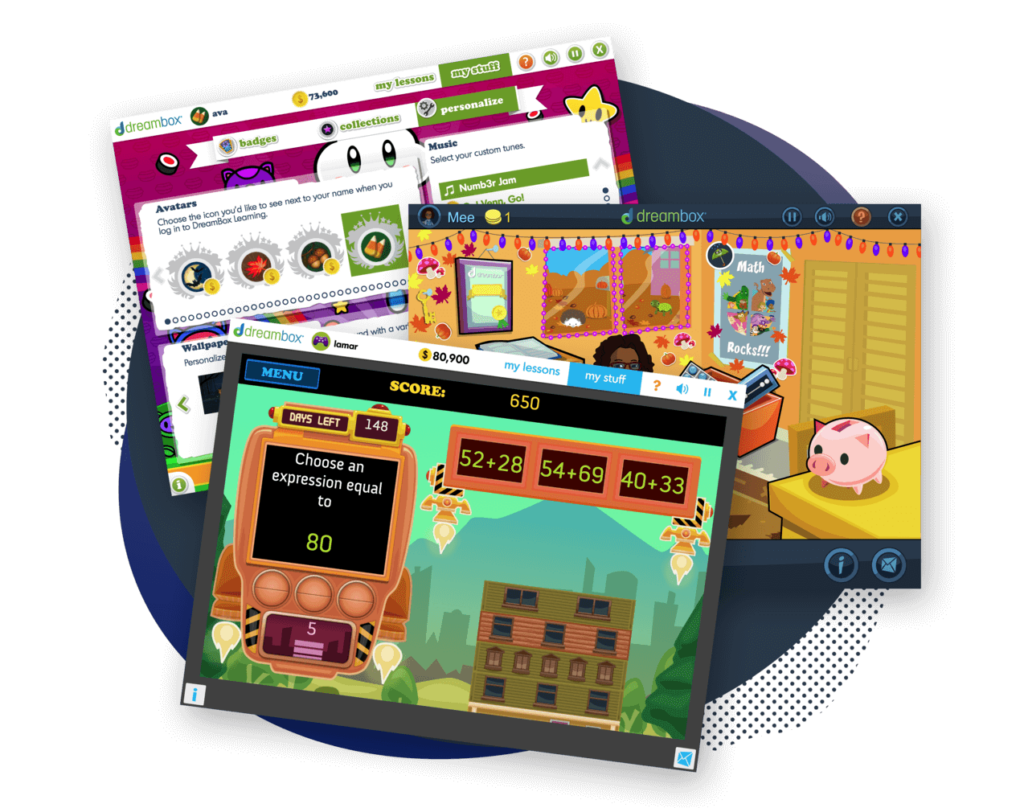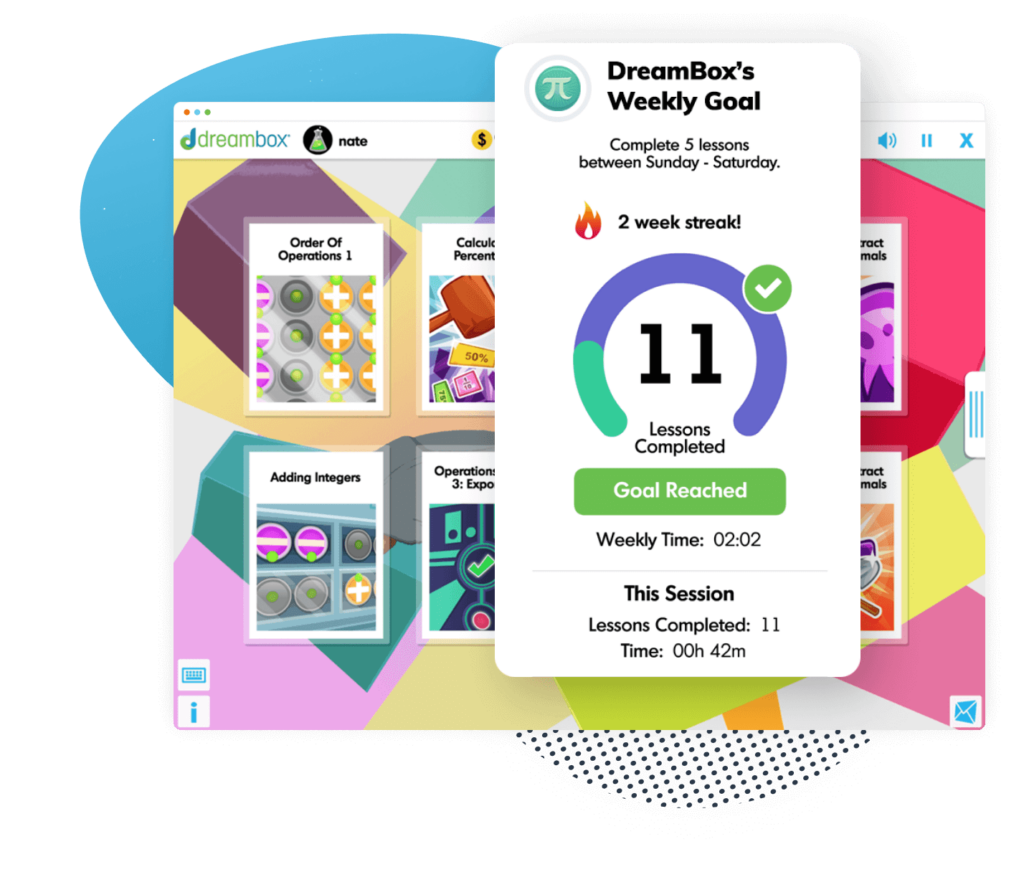How to Skip Count by 10
Skip counting by 10s is crucial in early math education, paving the way for more complex concepts like multiplication and division.

Author
Michelle Griczika
Published:
Oct 2024
Key takeaways
- • Skip counting by 10 is foundational skill in early math education, preparing children for more advanced numerical concepts.
- • Using both playtime and other strategies, including songs, visual aids, daily activities, and online learning apps, helps make mastering counting by 10s engaging and fun.
- • Regular practice with skip counting problems is essential for reinforcing this skill, and our math app provides an excellent resource to supplement this learning journey.
Skip counting, and especially counting by 10s, is one of the first significant milestones in math education. It builds a strong foundation for understanding number patterns, place values, and eventually, even multiplication and division! This guide provides practical strategies to help your child confidently count by 10s and smoothly incorporate the skill of counting by 10 into their daily learning. If you’re ready to support your child in mastering counting by 10s and eventually counting by 100, let’s begin!

Strategies for Teaching Skip Counting by 10s
Turn Learning Into Playtime
1. Hop and Count By Tens
Create a hopscotch grid with numbers 10, 20, 30, and so on, up to 100. Have your child hop on each number while saying it out loud. This kinesthetic activity will teach them to count by tens and develop their motor skills.
2. Sing Along to the Count by 10s Song
Encourage your child to sing along to various children’s songs that help them memorize the pattern of counting by 10s in a fun, enjoyable way.
3. Use Visual Aids
Group everyday items like pieces of fruit, toys, or even colorful cereal pieces into sets of ten and have your child count by 10s to find out how many are there in total.
4. Craft Projects
Turn learning into a fun craft project! You could create a “counting by 10s” wall chart or necklace with ten beads on each string. While making these crafts, your child can count by 10s as they add items, reinforcing the concept creatively.
Table of contents
Access more math practice with DreamBox
Turn math into playtime with DreamBox Math
DREAMBOX MATH
Get started for FREE today!

Other Learning Strategies
1. Count by 10 During Routine Activities
Incorporate counting by 10s into routine activities. For instance, while folding laundry, you can sort items into piles of 10 and count them with your child. This practice makes skip counting part of their daily routine, reinforcing the concept frequently.
2. Use a Number Chart
A number chart is a fantastic visual tool to help your child understand the pattern when they count by tens. Point out how the last digit remains constant (0) while the digit in the tens place increases by 1 each time.
3. Everyday Objects
You’d be surprised at how useful everyday items can be when teaching your child to count by 10s. Gather ten pens, ten spoons, ten blocks, or any other objects you have on hand. Group them into sets of ten, and have your child count each group as 10, 20, 30, and so on. This visual method allows children to physically see the concept of counting by 10s and can help them understand it more effectively.
4. Online Learning Apps
Online learning apps often offer engaging and interactive ways to practice skip counting. Our app for math help offers exercises on counting by 10s and incorporates them into your child’s learning schedule.

The math program that drives results
Get started today!
DreamBox adapts to your child’s level and learning needs, ensuring they are appropriately challenged and get confidence-building wins.
Practice Problems
Fill in the missing numbers in sequences below
Answer: 20
Answer: 10
Answer: 70
Answer: 20, 30
Answer: 10, 30
Answer: 80, 90
Answer: 10, 20, 40
Answer: 70, 90
Answer: 10, 40
Answer: 90, 100
FAQs About Skip Counting by Ten
Counting by 10s is an essential skill because our number system is base-10, meaning it’s built around multiples of 10. It also forms the foundation for understanding place value, addition, subtraction, and later, multiplication and division.
There are many strategies for teaching your child to skip count by 10. These include using manipulatives, integrating physical activities such as hopping, singing songs about counting by 10s, using number charts, incorporating counting into daily routines, and utilizing online learning apps. Providing plenty of practice opportunities is key.
Every child is different and develops at their own pace, but generally, children start learning to count by 10s in kindergarten, around ages 5 to 6. However, you can start introducing the concept earlier if your child shows readiness.
Some children might struggle to remember the sequence or the pattern when first learning to count by 10s. Visual aids, such as number charts or grouped objects, can help them visualize the pattern. Repetition, practice, and patience are key.
Practicing counting by tens will reinforce your child’s understanding. By incorporating these strategies, your child will be ready to tackle counting by 100 or even counting by tens, laying the foundation for more advanced math skills.
Take at home math practice to the next level
Empowering parents and educators to make math practice more impactful. Plus, your kids will love it.


